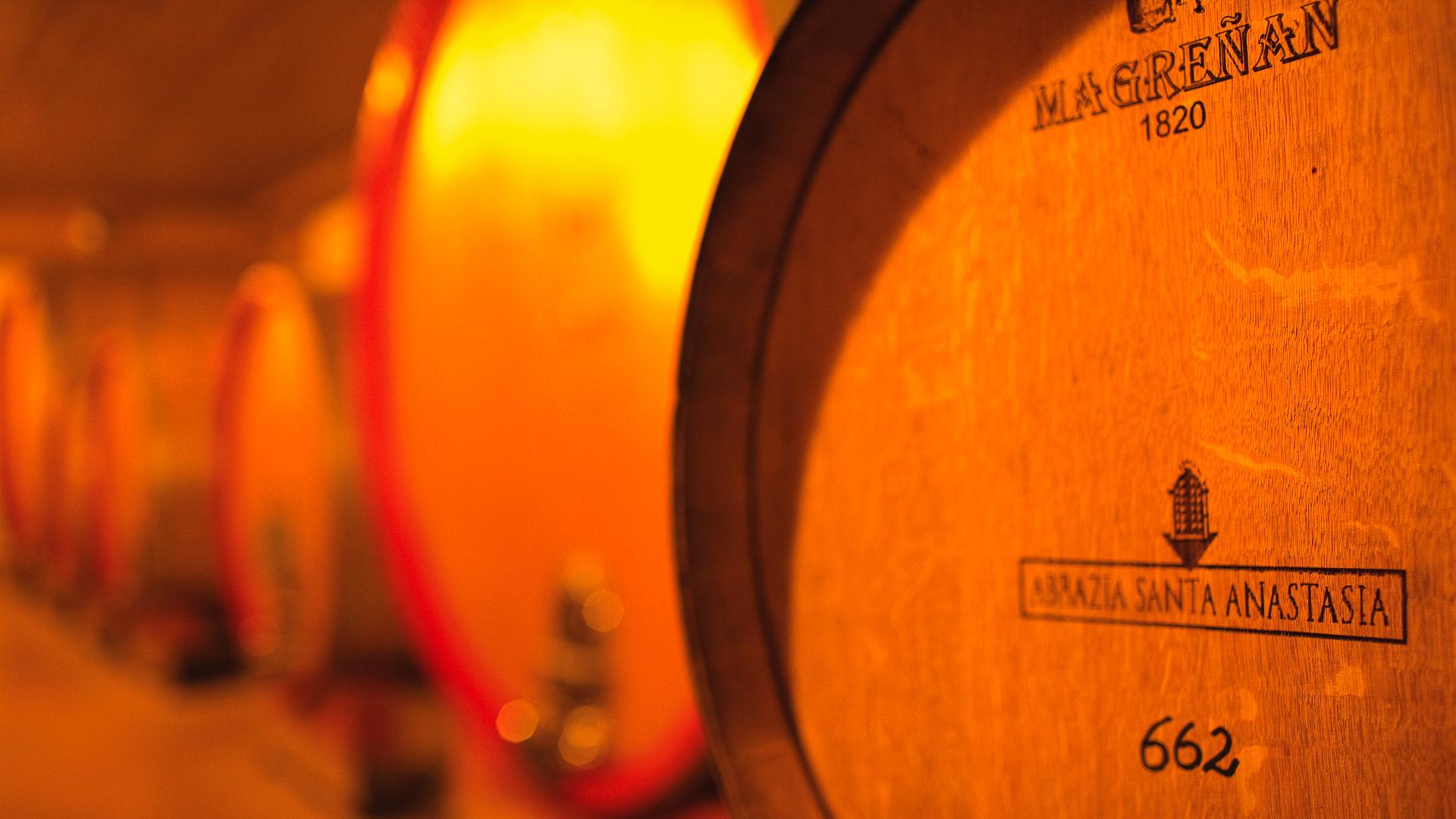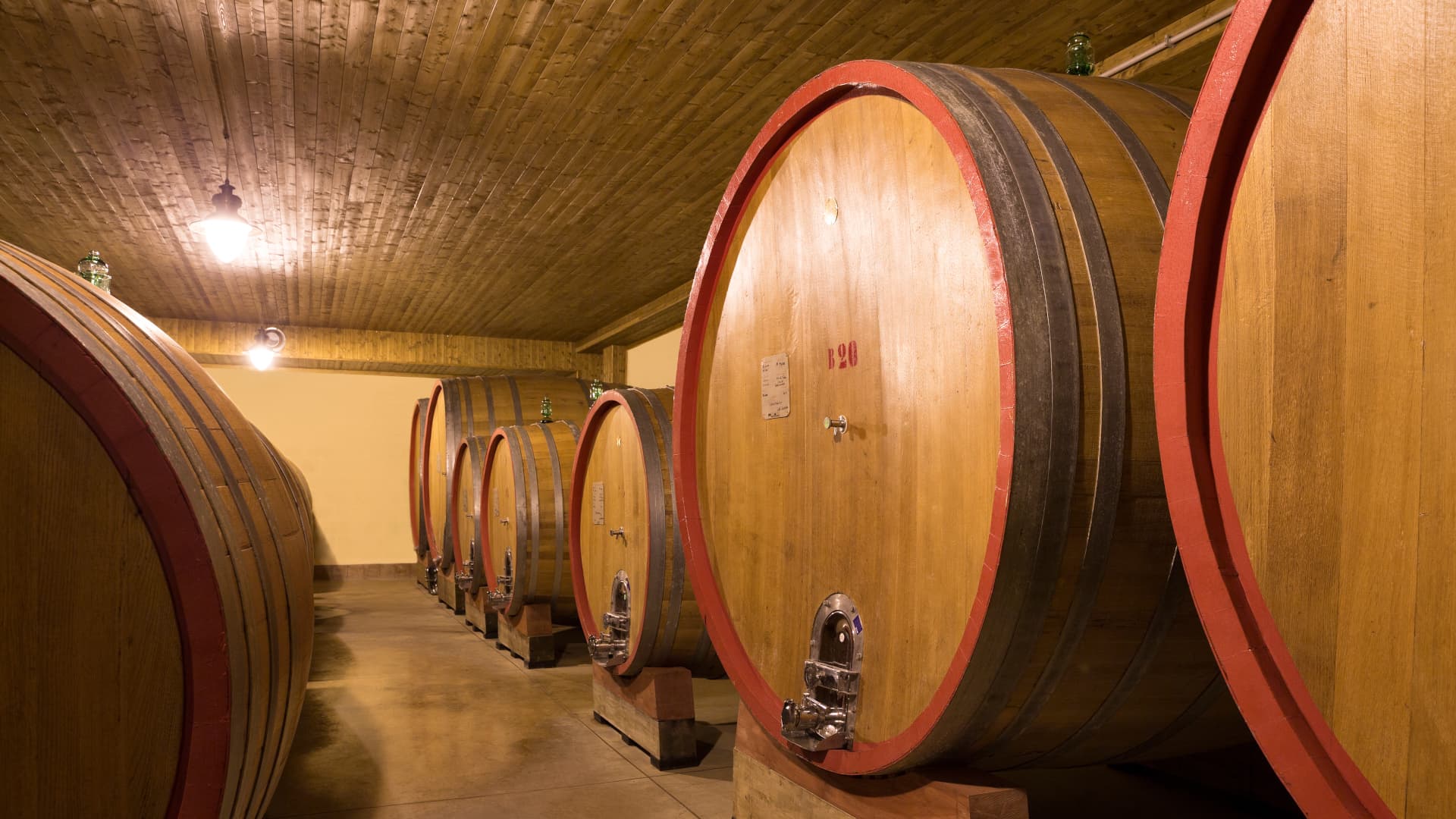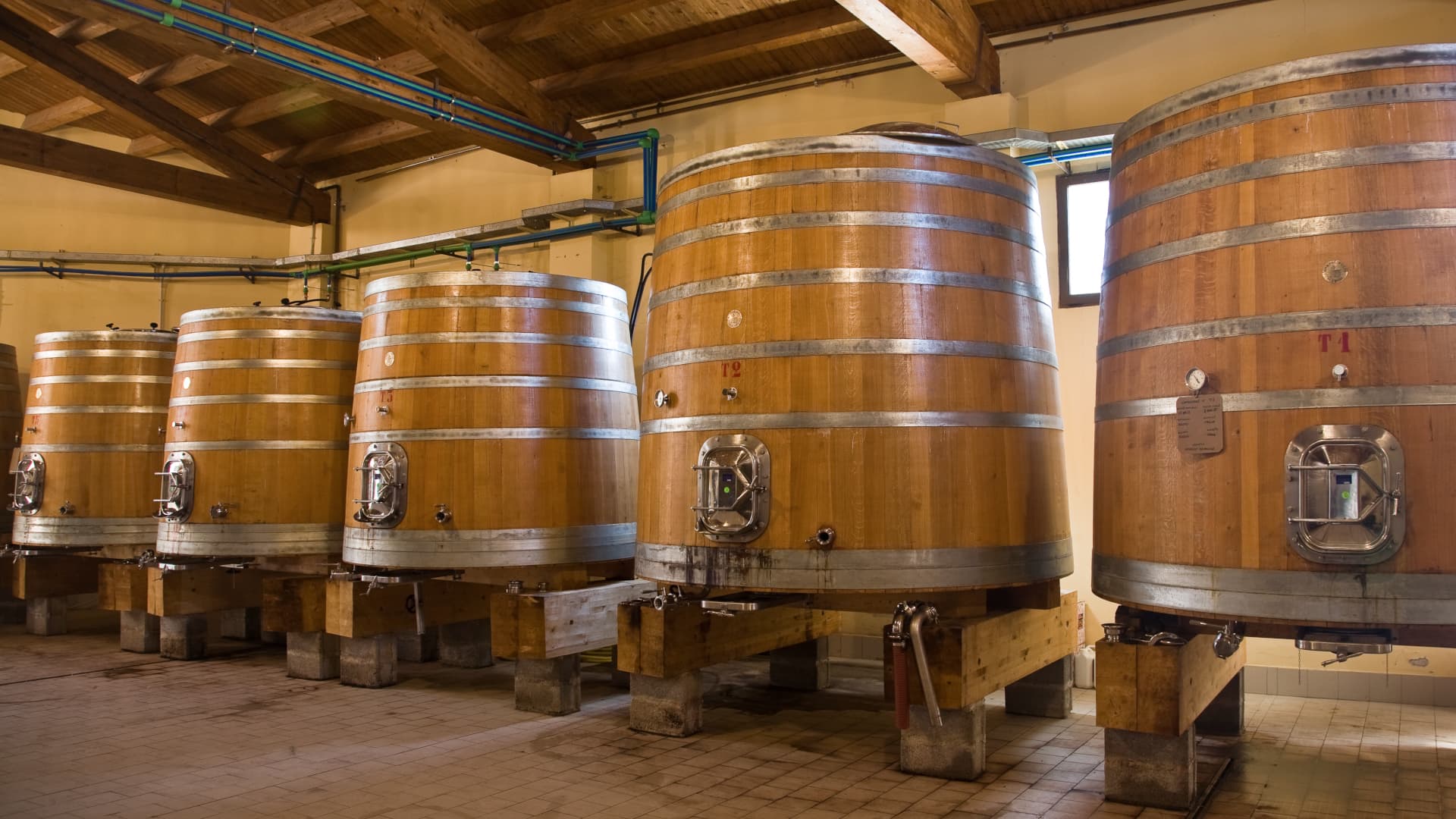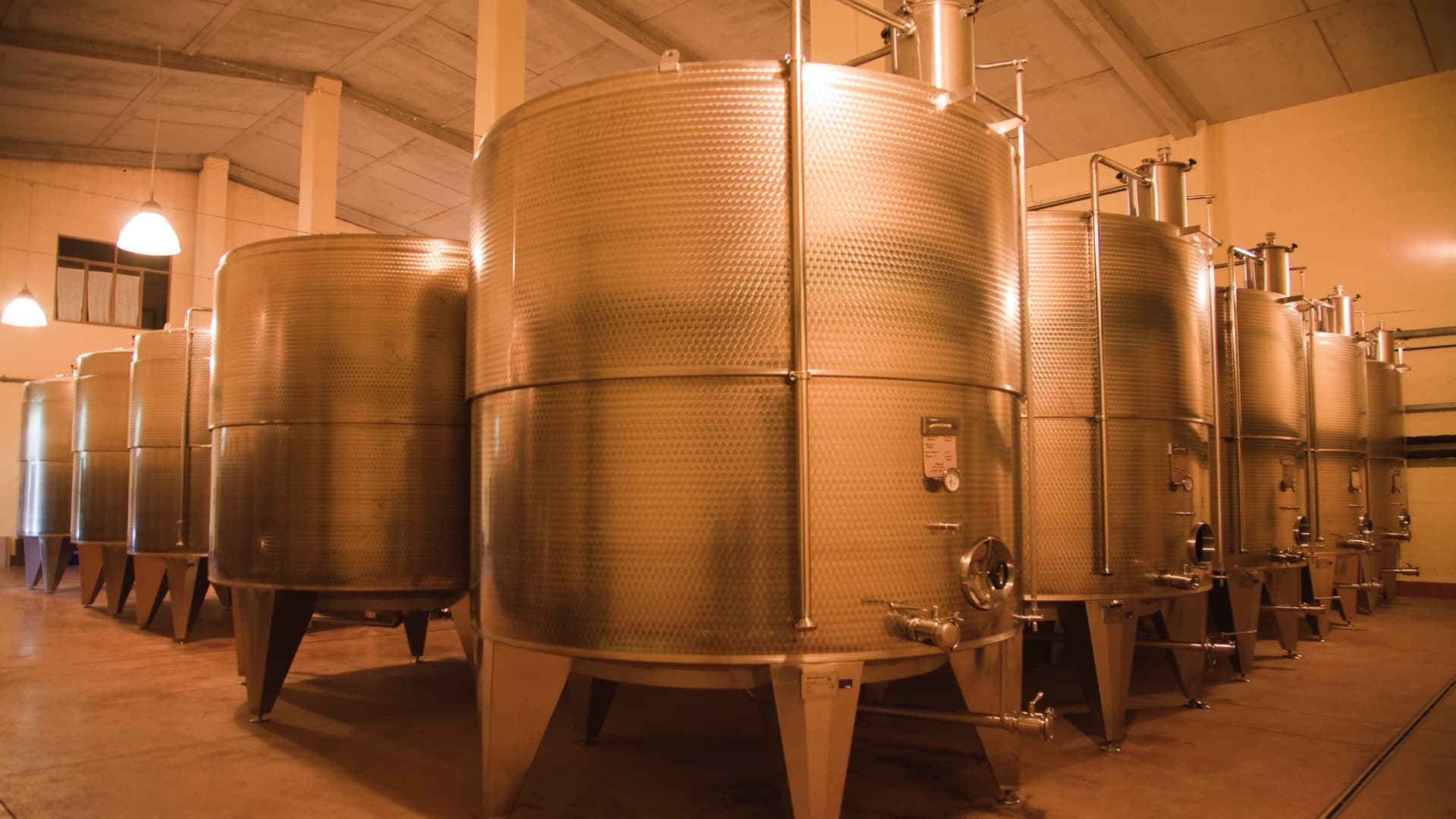The Winery of Abbazia Santa Anastasia
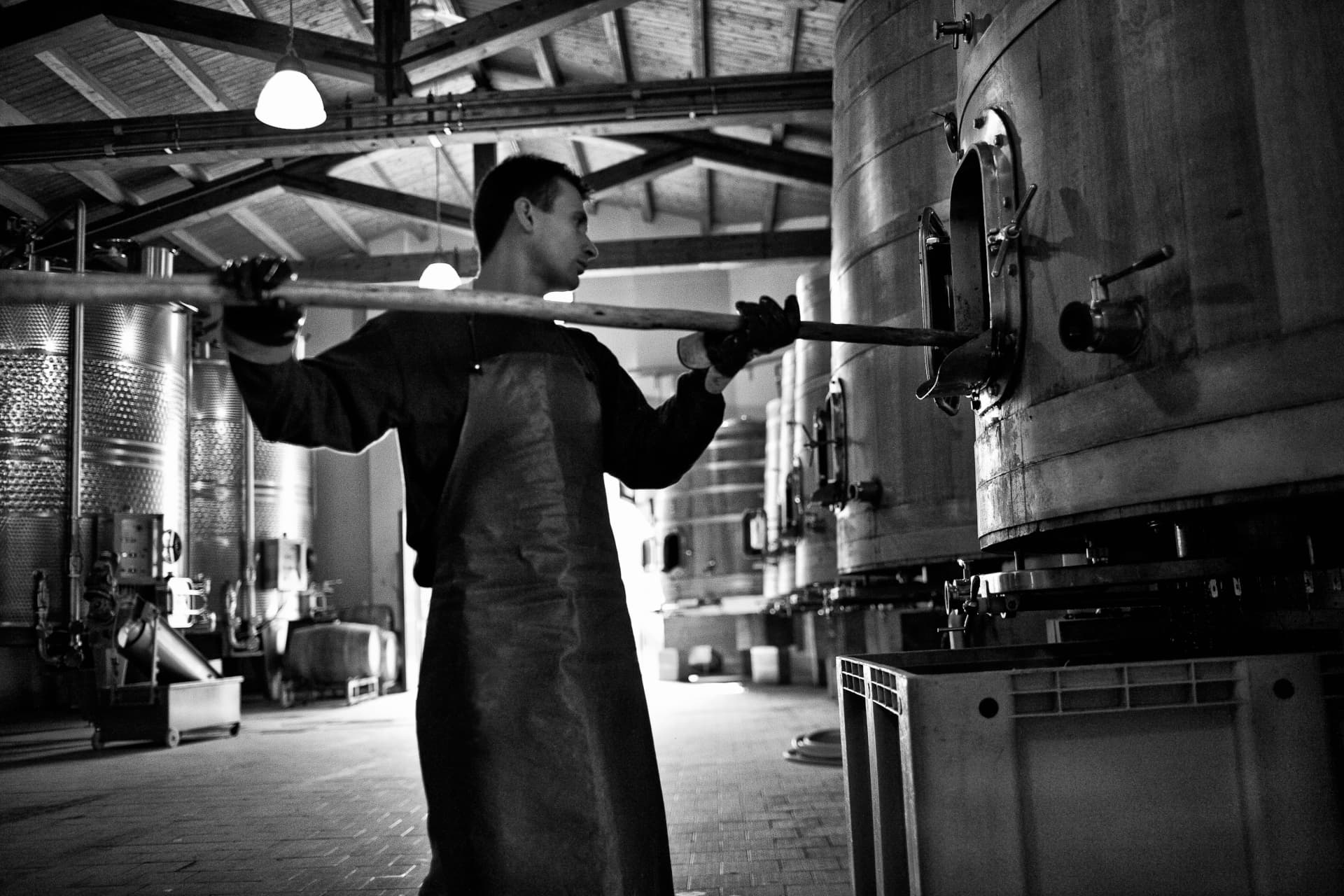
Medieval cellar
and modern organic techniques for award-winning wines
"Wine is the human interpretation of grapes ..."
Giacomo Tachis’ adage summarizes the authenticity and the man-nature symbiosis that animate the winemaking philosophy of Abbazia Santa Anastasia.
Thanks to the visionary Francesco Lena, by the end of the 1980s, this “human interpretation of grape” was made possible through the revaluation of wine growing, and precisely in that territory which in the past was the centre of cultural interest of the entire Madonie area. Season after season, thanks to a skilful restoration work, the Abbey returned to its ancient charm; at the same time the wine production began to move more and more towards higher quality wines.
Giacomo Tachis’ adage summarizes the authenticity and the man-nature symbiosis that animate the winemaking philosophy of Abbazia Santa Anastasia.
Thanks to the visionary Francesco Lena, by the end of the 1980s, this “human interpretation of grape” was made possible through the revaluation of wine growing, and precisely in that territory which in the past was the centre of cultural interest of the entire Madonie area. Season after season, thanks to a skilful restoration work, the Abbey returned to its ancient charm; at the same time the wine production began to move more and more towards higher quality wines.
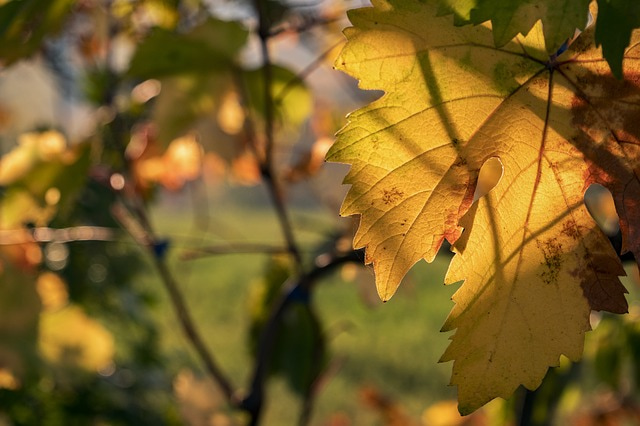
Tachis and Cotarella
the winemakers
The undisputed master of world oenology, Giacomo Tachis, who gave so much to Sicily, in the 90s contributed to turning the vineyards of this small patch of land again more flourishing and generous, a legacy of the meticulous work done in the centuries ago by the Theatine and Benedictine monks.
The teachings of the master Tachis, and of another pillar of oenology such as Riccardo Cotarella, were aimed at respect for the environment and the concept of sustainability that today places the Cantina di Abbazia Santa Anastasia at the forefront in the panorama of organic and biodynamic production.
The teachings of the master Tachis, and of another pillar of oenology such as Riccardo Cotarella, were aimed at respect for the environment and the concept of sustainability that today places the Cantina di Abbazia Santa Anastasia at the forefront in the panorama of organic and biodynamic production.
A natural cellar
Oenology between science and passion from the genius of the master Tachis
Nature dictated the directions for the construction of the modern cellar: a perfect combination of past and present. It was enlarged in the 2000s, and has thermo-conditioned rooms with sophisticated wine-making equipment.
Barriques, large French oak barrels, and vats in vitrified concrete and steel coexist with their different shades and qualities to refine and age the grapes, enhancing and supporting the specificities of each grape variety. Here where the wines rest, each material is entirely natural and in harmony with the ecosystem of the Relais.
As well for the roofing particular attention was paid to the materials used: absorbent panels made of mineralized wood and mixed with magnesite at high temperature.
Barriques, large French oak barrels, and vats in vitrified concrete and steel coexist with their different shades and qualities to refine and age the grapes, enhancing and supporting the specificities of each grape variety. Here where the wines rest, each material is entirely natural and in harmony with the ecosystem of the Relais.
As well for the roofing particular attention was paid to the materials used: absorbent panels made of mineralized wood and mixed with magnesite at high temperature.


